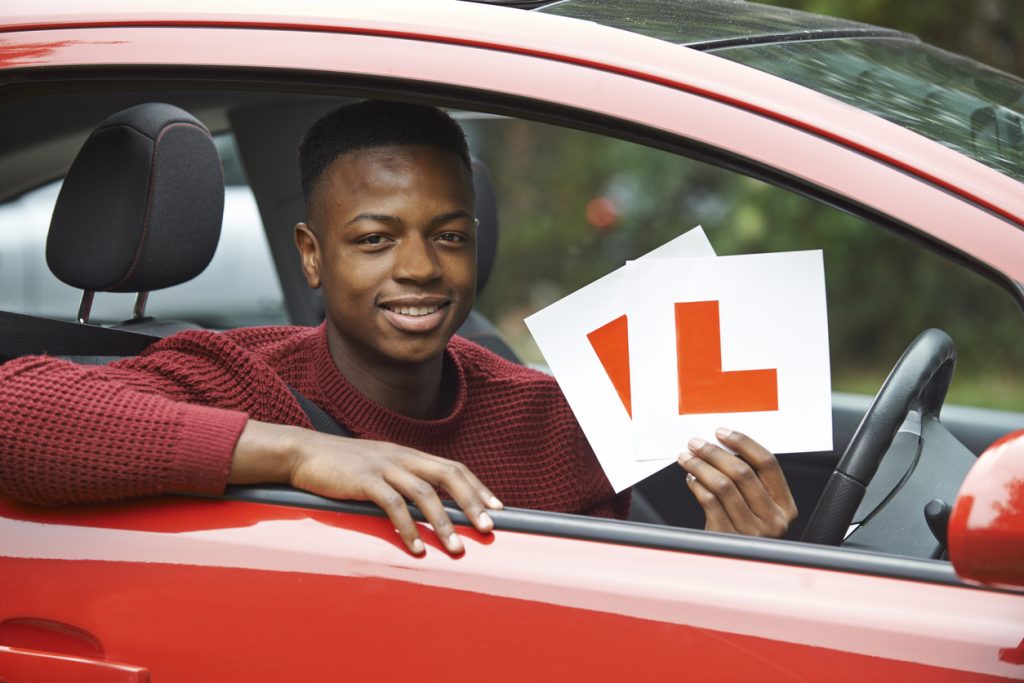It’s both daunting and exciting for parent and child alike, when the latter first gets behind the wheel of a car, turns on the engine and releases the handbrake for the first time. A rite of passage for many, signalling their foray into the adult world as they gain that little bit more independence. At 17, they just can’t wait, but due to the astronomical hourly cost of driving lessons these days, they might have to.
That is, unless mom & dad can hand over the keys to their own car, slap an L-plate on the front and back of it and handle the stress of teaching a teenager how to drive around the UK’s roads and return home in one piece.
If it’s too late and your inexperienced teenager has written off your car, or perhaps you want to get something safer and more reliable for them to learn in and drive once they pass their test, sell your old vehicle with us here at Scrap Car Comparison. We’ll find you the highest offers for your car and thanks to our network of scrap and salvage buyers that covers 99% of the UK, we can even arrange for your vehicle to be collected at no extra cost – no matter where you are. Get a quote in just 30 seconds by calling 03333 44 99 50 or by entering your vehicle reg and postcode into our scrap value calculator!

Can Your Parents Teach You To Drive?
Good news – your parents can indeed teach you to drive to help save some considerable cash! There are only a few rules regarding who can teach other people to drive. These are laid out on the government’s website, but we’ve bullet-pointed them below:
You can be taught to drive by anyone who:
- Is over 21 years of age.
- Is qualified to drive in the type of vehicle you are being taught in, eg. manual transmission.
- Has had a full driving licence for over 3 years, qualifying in the UK, the EU, Switzerland, Norway, Iceland or Liechtenstein.
There are also a couple of restrictions, though the first of the two, we hope, should go without saying:
- Your teacher cannot use a mobile phone while supervising you.
- You cannot drive on the motorway.
Finally, there are specific rules regarding insurance when you’re learning to drive under the supervision of a parent. If you own the car, you will need your own insurance policy; this should also cover the person teaching you.
However, if you’re learning in someone else’s car (like, for example, mom or dad’s), you will need to ensure that you are covered by their insurance policy as a learner driver or take out your own insurance policy that covers learners.
Something important to consider – certain car insurance companies require the person supervising to be over the age of 25, regardless of whether or not they’ve been driving for 3 or more years.
How To Teach Your Teenager To Drive
So, you’ve double-checked the restrictions and ensured that you’re about to supervise a learner driver. What’s next?
Tips For Teaching Your Teenager
The first thing to do is to run through the essential checks regarding the car’s roadworthiness – things like tyre tread depth and pressure, whether the lights work and that the vehicle has enough window wash fluid. You might have never, ever checked these things before setting off on a drive before, but getting your teenager to perform the checks with you will prepare them for when they’re on their own after they pass. Plus, it might help with some theory or practical test questions. It’s also an excellent idea to refresh your knowledge of the Highway Code before you start teaching them, so that you know the rules well enough to advise your new student correctly.
You should plan the route you’re going to take before you set off, and do this with the driver’s level of experience in mind. If they’re getting into the driver’s seat for the very first time, then you should start with the quietest of roads that are limited to 30 or 40 mph. The timing of your drive is important, too. Stick to daylight hours initially and don’t forget that even residential roads can become busy around rush hour when everybody is heading home from work. If you can, try and drive around lunchtime, or if we’re enjoying those well-lit summer evenings, a later session could work too.
Most importantly, the best thing you can do is to remain patient. Losing your cool or even showing any signs of doubt in your teenagers ability to handle the vehicle could hinder their concentration, knock their confidence, push them towards paying a professional instructor or potentially even put them off driving altogether!
Key Things To Teach Your Teenager
Some things are essential to know before your teenager takes their test:
Know the interior:
Before you even start moving, it’s crucial that your teen knows where everything is in the car and what it all does. Modern cars in particular can feature a lot of different knobs, buttons and stalks peppered all over the dashboard, and while some of them might not be needed right away, others are very important. Show them how to use the indicators, headlights, windscreen wash & wipers, hazard lights, fog lights, window demisters and anything else that you deem to be useful.
Mirror, signal, manoeuvre:
This is a phrase that you will probably have heard on your own driving lessons… and then never uttered again since. Drill it into your teen by making sure they check their mirrors and signal their intentions with the indicators before moving. Of course, you should make sure that they continue using their mirrors and indicators throughout the lesson.
CBA:
Ironically, this may be something your teen has said many times, but now it’s your turn to spell it out to them – clutch, brake, accelerator. If you’re teaching them to drive a manual car, this is the order of the pedals. CBA is a useful acronym to remember it. Make sure they know that the left foot only operates the clutch and that the right foot does the accelerator and brake.
Road positioning:
It’s always a good idea to start out on a quiet, residential road and this is one of the reasons why. Allow your teenager to get used to the size of the car and the perspective from the driver’s seat. They should be about one metre from the curb, but generally it is good advice to tell them to remain in the centre of their lane. Bear in mind that they’ve spent their entire life up to this point viewing the road from a different angle, so don’t be surprised if they tap the curb a few times!
Speed:
Starting out slow, at 30 mph, is naturally the best way to begin but you’ll have to be aware that your teenage driver will lack the ability to ‘feel’ how fast they’re going at this stage. With experience, drivers can make an educated guess about how fast they’re going without even looking at the speedometer and will generally stick to speed limits subconsciously. Keep an eye on the speed that your teenager is driving and advise them to slow down – or speed up – accordingly.
Things To Be Aware Of
Once they’ve got the key basics down, it’s time to consider other things to be aware of. These should be made clear to the young driver, but as the one with all the experience, they’re also for you to bear in mind.
Expect the unexpected:
You never know what’s around the next bend, so use your hazard perception to try and predict what could go wrong before it poses a real threat. See someone heading towards a zebra crossing? Tell your teen to slow down slightly and anticipate that they might step out into the road. Sharing the road with somebody who’s failed to use their indicators at the last three junctions? Explain that they’re driving dangerously and that it’s important to stay aware of their behaviour.
Inconsiderate drivers:
Everyone was a learner at one point, but you will find that some people have forgotten that. If your teenager is driving well but somebody behind is frustrated that they can’t overtake and tear away down the road, make sure any intimidation (tailgating, light flashing, horn honking) doesn’t get to them.
Tell them that they’re doing the right thing and that the other driver is in the wrong. Being intimidated by other drivers could knock their confidence going forward, but it could also impact their own performance. The last thing you want is for your new driver to feel pressured into breaking the speed limit because they’ve got another vehicle filling their rear view mirror. If a particular car is becoming a problem, simply stop where safe and allow them to pass.
Teaching your teenager to drive not working out? If you’re looking for a professional driving instructor, here’s how you can find the best ones for the job.
If it’s time to upgrade your car, or give your teenage driver something safer and more reliable to use, sell your current old vehicle with Scrap Car Comparison and we’ll scour the market for the best prices. We’ll connect you with scrap and salvage buyers that want your car, no matter where you are, thanks to our network covering 99% of the UK. You’ll even get free collection included, meaning you can have your car sold in no time all while barely lifting a finger. Get a quote today by calling our sales team on 03333 44 99 50 or by using our scrap value calculator, and find out how much your car could be worth now!



